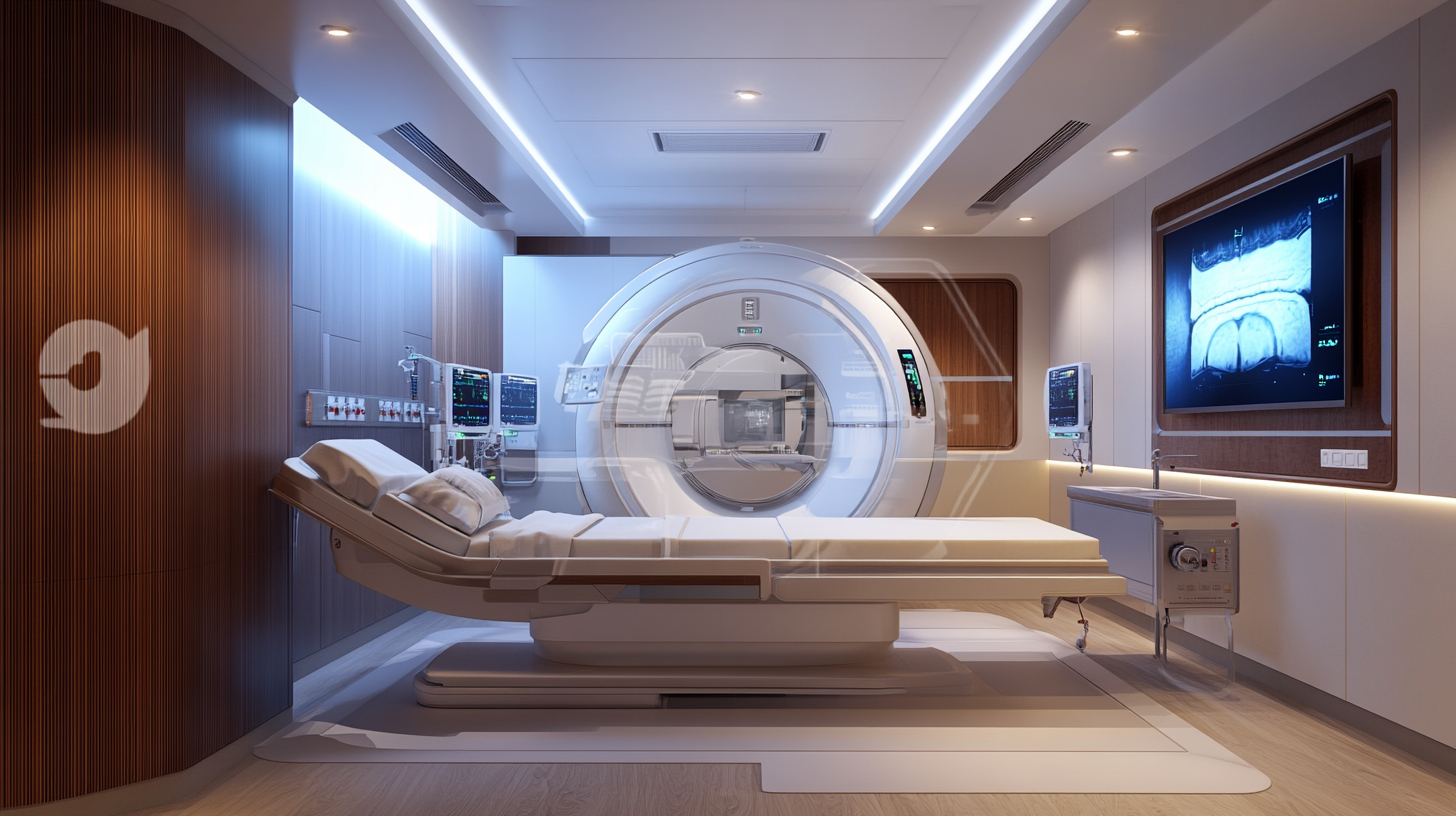Click here to browse our On The Mend Portfolio!
Innovative Trends in Hospital Equipment Rental and Their Impact on Healthcare Efficiency
The healthcare industry is undergoing a significant transformation, particularly in the realm of medical equipment management. A notable trend is the growing reliance on Hospital Equipment Rental, which has become increasingly essential as facilities strive to enhance operational efficiency and manage costs. According to a report by MarketsandMarkets, the global healthcare equipment rental market is projected to reach $60 billion by 2025, driven by factors such as the rising demand for cost-effective and flexible equipment solutions in hospitals. As facilities navigate the complexities of financial pressures and technological advancements, the adoption of rental models offers a viable pathway to streamline operations while maintaining high-quality patient care.
Furthermore, the shift towards Hospital Equipment Rental is not merely a financial strategy but is also influencing clinical outcomes and patient satisfaction. Research from Frost & Sullivan indicates that hospitals utilizing rental services experienced a 35% reduction in equipment-related costs and enhanced service availability. This evolving landscape highlights the importance of adaptability and innovation in healthcare, with rental services poised to play a pivotal role in meeting both operational demands and patient care standards. As we delve into the innovative trends in hospital equipment rental, it is crucial to understand how these changes are reshaping the efficiency and effectiveness of healthcare delivery.

Emerging Technologies Transforming Hospital Equipment Rental Practices
The landscape of hospital equipment rental is rapidly evolving, significantly driven by emerging technologies that are transforming practices and improving healthcare efficiency. With the integration of advanced software solutions, hospitals can now streamline their inventory management, optimize equipment utilization, and reduce costs. This transition is not just about renting equipment; it involves innovative platforms that leverage data analytics to predict demand and prevent shortages, ensuring that healthcare providers have access to the necessary tools at the right time. One notable trend is the incorporation of digital twin technology and extended reality applications, enabling hospitals to simulate equipment usage and training scenarios virtually. This cutting-edge approach not only enhances training for staff but also allows for better readiness during actual patient care circumstances. As hospitals navigate the complexities of insurance and patient care, AI-powered solutions are emerging as robust allies in managing equipment and workflow, facilitating smoother operations and ultimately leading to improved patient outcomes. Moreover, as we witness a shift in pharmaceutical companies toward digital agility, their collaboration with healthcare providers in equipment rental practices exemplifies a commitment to innovation. By adopting shared technology platforms that integrate seamlessly with existing systems, stakeholders can enhance their operational efficiency. Collectively, these advancements signify a pivotal moment in healthcare, where traditional equipment rental practices are being redefined, favoring approaches that embrace technology to meet the increasing demands of patient care.

Market Growth: Statistics on the Expanding Equipment Rental Sector in Healthcare
The equipment rental sector in healthcare has witnessed remarkable growth, driven by rising costs and the need for efficient resource management. According to recent statistics, the global healthcare equipment rental market is anticipated to reach new heights, with a projected growth rate of over 10% annually. This surge is largely attributed to hospitals and healthcare facilities seeking to optimize their budgets while providing high-quality care.
One of the key drivers of this market expansion is the increasing demand for specialized medical equipment, often required for short-term use. Hospitals are finding it more cost-effective to rent rather than purchase equipment such as ventilators, MRI machines, and surgical tools. This not only alleviates financial strain but also ensures that healthcare providers have access to the latest technology without the burden of maintenance and depreciation costs.
Moreover, the flexibility of rental agreements allows healthcare facilities to adapt quickly to changing patient needs or emergencies, such as an influx of patients during a public health crisis. By embracing innovative rental solutions, hospitals can streamline operations and enhance overall efficiency, ultimately leading to improved patient outcomes. The growing recognition of these benefits is likely to encourage further investment in the equipment rental market, solidifying its role as a vital component of the healthcare industry.

Cost Efficiency: How Equipment Rental Reduces Operational Expenses for Hospitals
The healthcare industry has witnessed a significant shift towards equipment rental as a cost-efficient alternative to purchasing new medical devices. According to a report by ResearchAndMarkets, the global medical equipment rental market is expected to grow at a compound annual growth rate (CAGR) of 5.2% from 2020 to 2025. This trend is primarily driven by hospitals seeking to reduce operational expenses while maintaining high-quality patient care.
One of the primary reasons hospitals turn to equipment rental is the substantial savings on capital expenditures. The Healthcare Financial Management Association (HFMA) highlights that purchasing medical equipment can require up to 80% of a hospital's budget for capital investments. In contrast, a rental model allows hospitals to pay only for the specific time they need the equipment, avoiding the high upfront costs associated with ownership. This flexibility not only conserves cash flow but also enables healthcare facilities to use their resources more effectively.
Additionally, rental agreements often include maintenance and servicing, which can alleviate the burden of ongoing costs associated with owning and maintaining equipment. The American Hospital Association (AHA) found that hospitals that utilize rental services report a reduction in operational expenses by up to 25%. This means they can allocate funds towards critical areas such as staffing and patient care, further enhancing overall healthcare efficiency. With the mounting pressures on healthcare systems to deliver quality services while controlling costs, equipment rental emerges as a strategic solution for many institutions.

Improving Patient Care: The Role of Rental Equipment in Enhancing Healthcare Outcomes
The healthcare landscape is constantly evolving, and one of the most significant trends is the increasing reliance on rental equipment to improve patient care and enhance healthcare outcomes. By opting for rental medical equipment, hospitals can access the latest technology without the burden of high capital investments. This flexibility allows healthcare providers to keep pace with advancements and better serve their patients, ensuring that they have access to state-of-the-art tools essential for accurate diagnosis and treatment.
Moreover, equipment rental plays a crucial role during surges in patient volume, such as during pandemics or seasonal outbreaks. Hospitals can quickly scale up their capabilities by renting additional equipment, which ensures that they can respond effectively to public health demands without straining their budgets. This adaptability not only improves operational efficiency but also directly contributes to better patient outcomes by minimizing wait times and providing quicker access to necessary care.
Additionally, rental agreements often come with maintenance and support services that further enhance healthcare efficiency. Hospitals can focus on their core mission of patient care rather than worrying about equipment upkeep. This arrangement maximizes the uptime of critical devices, ultimately leading to improved healthcare services. By integrating rental equipment into their operations, healthcare facilities can boost their ability to deliver high-quality, responsive care that meets the diverse needs of their patients.
Sustainability in Healthcare: Environmental Benefits of Equipment Rental Systems
The healthcare sector is on a transformative path towards sustainability, and equipment rental systems are at the forefront of this green revolution. By opting for rental instead of outright purchases, hospitals can significantly reduce their environmental footprint. This shift not only curtails waste associated with outdated or infrequently used equipment but also extends the lifecycle of medical devices through maintenance and efficient utilization.
Moreover, the financial implications are significant. A recent study indicates that implementing sustainable practices within healthcare could yield savings of up to $15 billion over the next decade. Equipment rental systems inherently embody this principle by facilitating access to the latest technology without the burden of ownership. This approach allows healthcare facilities to allocate resources more efficiently, ensuring that funds are directed toward patient care rather than equipment depreciation.
In addition to cost savings, the environmental benefits of equipment rental are evident. By minimizing the demand for new equipment manufacturing, healthcare institutions can lower greenhouse gas emissions and conserve valuable resources. This holistic approach not only enhances operational efficiency but also supports broader goals of climate resilience. As the healthcare industry moves toward greener practices, the adoption of sustainable equipment rental systems will play a pivotal role in creating a healthier future for both patients and the planet.
View Products
- Bathroom Safety & Shower Systems
- Canes, Knee Walkers, Rollators & Wheelchairs
- Compression Socks, Stockings & Custom Garments
- CPAP Machines, Devices, Accessories & Supplies
- Incontinence Supplies
- Lift, Reclining, and Sleeper Chairs
- Power Scooters, Power Chairs & Accessories
- Ramps & Handicap Access
- Stair, Platform & Portable Lifts
- Blog
Our Locations
Visit Us in CT, NY & CA
Looking for a 'medical store near me'? Call On The Mend for the equipment and service you need!

